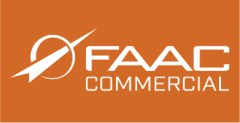Using Simulation to Support Your Low or No Emission Transition Planning
Published

The nationwide transition to zero-emission bus service is a significant undertaking. Each agency embarking on its transition needs to balance economic, infrastructure, and workforce-related challenges. The good news is that federal dollars are there to support these agencies, and there is also often additional backing from local and state programs or investment from utilities and other stakeholders.
But even a well-supported transition requires careful planning and collaboration. Many agency leaders are feeling overwhelmed, especially as deadlines loom.
A Welcome Roadmap for ZEB Transition Planning
In November 2024, the nonprofit Center for Transportation and the Environment (CTE) released an excellent ZEB transition planning guidebook. It draws on best practices the organization has established over 30 years of helping more than 60 transit agencies transition to zero-emission technologies.
CTE’s Zero-Emission Bus Transition Planning Guidebook is a must-read. It complements existing resources by providing a detailed, overarching framework to organize your planning process. This comprehensive guidebook breaks ZEB transition planning into nine sequential, color-coded phases so agency decision-makers can quickly identify necessary steps, key stakeholders, and common pitfalls at each phase of the process.
Importantly, this guidebook highlights the reality that, in contrast to deploying a few EVs in your fleet, ZEB transition—and thus transition planning—is an ongoing and evolving process, likely to span a decade or more. Your plan will need to change to accommodate shifting local and national political priorities, funding availability, regulatory changes, and agency-specific timelines.
CTE’s Guidebook is an excellent planning guide. We strongly recommend that every agency downloads it now, even if their move to EVs seems far off. It’s never too early to start getting your decision-makers and stakeholders thinking about the future.
However, many agencies still seek help “filling in the blanks” and support implementing their plan. For example, CET’s Guidebook highlights the importance of training. Training is key to addressing the realities of ZEB range limitations and meeting broader workforce development goals. The Guidebook offers a few concrete training suggestions and recommendations. Meanwhile, we’re finding that transit agencies are using their existing FAAC simulators in new ways, smoothing their ZEB transition. Every FAAC Transit Driving Simulator now includes features that help Operators familiarize themselves with their specific ZEB models while easing “range anxiety” and building the skills they need to get the most out of each charge.
Getting an Early Start Acclimating to Your ZEBs
CET’s Guidebook highlights how important it is that Operators get ample opportunity to adapt to the “feel” of a ZEB long before it’s part of their day-to-day work life:
“Vehicle operations are where some notable skill changes occur between ICE and ZEB vehicles, especially as it relates to the experience of driving the bus,” CET notes. “Unlike service staff, which can have tiers or levels of skills, bus operator training is typically binary in the sense that a driver is either fully qualified to drive a bus or not. It is imperative that a driver is not partially trained to operate a ZEB alone. … The extremely quiet nature of ZEB vehicles requires a mental shift in the perceptions of the driver. … and perhaps most significantly, regenerative braking will significantly change how it feels to drive a ZEB. Operators must understand what the ZEB’s regenerative braking means for them.”
In most cases, the “strength” of regenerative braking is adjustable. On some models, it changes automatically in response to the state of charge, with regenerative braking coming on “harder” when the batteries are low and feeling almost entirely absent when the batteries are fully charged—potentially leading to nasty surprises for new Operators accustomed to relying on the regen to slow the bus.
FAAC sims accurately emulate generic EV bus vehicle dynamics and the unique dynamics of the most common ZEBs from Gillig, New Flyer, and others. ZEB-specific driving scenarios included with the simulator help operators develop new driving habits that are better suited to operating these vehicles. For example, ultra-quiet ZEB operation leads to pedestrians, cyclists, and other vehicles inadvertently wandering into the path of a ZEB they do not realize is moving. Given the state of driver distraction, it will fall on the Transit Operator to ensure public safety in these situations. Other included simulation scenarios help Operators develop new scanning behavior as they drive so that they can factor battery state-of-charge into how they handle the acceleration and breaking (i.e., “driving with both feet and both eyes”).
After a few sessions in the simulator—where they can experience how their new ZEBs will perform in various road and weather conditions, under various state-of-charge situations, and be treated by distracted pedestrians and heavy traffic—operators will have a much more intuitive sense of what to expect from their vehicles and themselves.
From Plan to Action, FAAC is Here to Help
FAAC sims also include a suite of tools to help trainers ensure their Operators get more out of each training session. This integrated curriculum development, after-action review, and trainee assessment system lets trainers plan and customize training sessions while capturing all Operator behaviors and actions throughout each simulation scenario. That includes any decisions that affect the ZEB’s state of charge and vehicle range. This information can then pinpoint bad habits and skills gaps so that these can be quickly remediated.
FAAC regularly works with agencies, their trainers, and their Operators to establish custom vehicle operations benchmarks in this tool and ensure that each agency’s simulation-based training system accurately captures their policies and procedures.
For more than 50 years, FAAC has provided simulation-based turnkey training solutions for transit agencies, public safety, the military, and private industry.
Want to talk about changes to your Operator training programs? Feel free to contact us. Our team of experts looks forward to speaking with you.
NOW QUALIFIED FOR THE NEW 2025 LOW NO GRANTS – MORE INFO HERE

